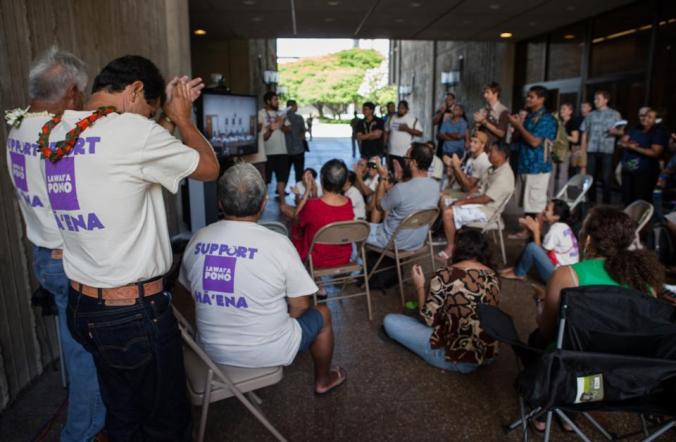As of July 1, Hawaiʻi will become the second state to implement a court dedicated exclusively to environmental issues.
Last week Friday, Kirsten and Brad attended a symposium at the UH Mānoa Richardson School of Law, where they learned about environmental court systems around the world, the history of Hawaiʻi’s environmental court, how the Hawaiʻi’s court will work. The symposium was facilitated by Denise Antolini, associate law dean at UH Mānoa’s law school who previously served on the Commission of Water Resource Management.
India has the largest and most powerful environmental courts in the world, the National Green Tribunal of India (NGT). The chairperson of the NGT, Swatanter Kumar along with Dr. C. Raj Kumar, the Vice Chancellor of the O.P. Jindal Global University and Dean of the Jindal Global Law school and four of his students were in attendance at the symposium to share about their court and experiences in environmental law.
There is no better place for an environmental court; the State of Hawaiʻi is incredibly dependent on its beautiful natural environment not only to sustain its tourism-based economy but most importantly for resources to house and feed its residents. Hawaiʻi has a strong constitutional foundation and environmental laws already in place, its just a matter of educating and enforcing the existing infrastructure.
The environmental court will be statewide, with district and circuit courts in each of Hawaiʻi’s counties. 22 judges familiar with and trained in environmental law have been appointed to serve in this court. The court will cover cases dealing in environmental impact statements and assessments, Department of Land and Natural Resources (DLNR): Division of Boating and Ocean Recreation (DOBOR), Division of Aquatic Resources (DAR), water commission issues, and mostly Divison of Conservation and Resource Enforcement (DOCARE) violations.
Hawaiian rights will also be an important part of the environmental court. “Even though it’s not explicit, it is interwoven in a lot of cases, sometimes criminal and sometimes civil”, says Denise Antolini.
Click here to read more.







